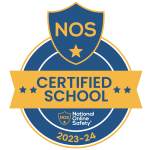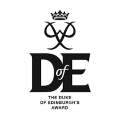|
PECS |
Picture Exchange Communication System |
|
||||||||||
|
Colourful Semantics |
|
A programme aimed to develop your child’s language. The approach has 4 key colour coded stages to help your child build a sentence. Children build sentences based on who, what doing, what, where to interact with the world around them.
|
||||||||||
|
Blank Levels |
|
Blank Levels enables you to direct questions at your child’s level of understanding ensuring your child knows what is said to them. For example:
|
||||||||||
|
Attention Autism |
|
The Attention Autism programme targets the teaching of attention, communication and social interaction skills. It aims to develop natural and spontaneous communication through the use of visually based and highly motivating activities. The primary objective is that the sessions are fun and “offer an irresistible invitation to learn”.
|
||||||||||
|
Intensive Interaction |
|
Intensive interaction is a practical approach that can help people who are in the early stages of communication development. Techniques such as turn taking, mirroring, rhythm and repetition, and sharing personal space can be used to support communication exchange that is initiated and led by the person, and in turn promotes a positive interaction.
|
||||||||||
|
Lego Therapy |
|
A group intervention used in school to support the pupil with a range of skills e.g. social skills, understanding and expressive language, listening, attention and co-operation.
|
||||||||||
|
Social Stories |
|
Social stories are short descriptions of a particular situation, event or activity, which include specific information about what to expect in that situation and why. Social stories present information in a literal, 'concrete' way, which may improve a person's understanding of a previously difficult or ambiguous situation or activity. The presentation and content can be adapted to meet different people's needs. |
||||||||||
|
LSP |
Learner Support Plan |
Written to provide a planned and consistent framework which supports each child individually. All LSP's follow proactive strategies which enable a whole school consistent approach to behaviour support.
|
||||||||||
|
PHP |
Positive Handling Plan |
Written for any pupils who are identified as needing staff support to manage their emotions and behaviour safely.
|
||||||||||
|
RMP |
Risk Management Plan |
An RMP is put into place to highlight times in the day that a pupil will need 1:1 support. This maybe for the safety of other pupils in school, or to keep the pupil themselves safe.
|
||||||||||
|
Boxall Profile |
|
The Boxall Profile is an assessment of children and young people's social, emotional and behavioural development. A two-part assessment analyses firstly the pupils’ stage of learning, their strengths and weaknesses so help can be precisely focused. Secondly looks at their barriers to learning.
|
||||||||||
|
Superflex |
|
A social thinking curriculum to help pupils increase their awareness of behaviour and emotions and develop ways of being a super-flexible thinker.
|
||||||||||
|
The ALERT Programme |
|
We compare our children’s bodies to an engine, “If your body is like a car engine, sometimes it runs on fast, sometimes it runs on slow and sometimes it runs just right (alert and focused).” Dependent on how your child is presenting, with the use of sensory activities we can help them to become “just right” again.
|
||||||||||
|
SCERTS |
Social Communication, Emotional Regulation and Transactional Supports |
A teaching approach which focuses on developing your child’s social communication and their ability to regulate through the use of different verbal and visual learning supports.
|
||||||||||
|
TEACCH |
|
These can look very different dependent on your child’s need.
|
||||||||||
|
Alternative Curriculum |
|
Some children have a specific barrier to learning that we feel it is important to address before we look at them working towards targets from the National Curriculum. They will work on an alternative curriculum which could focus on their communication skills or their ability to attend.
|
||||||||||
|
E4L/EfL |
Evidence for Learning |
Every week you can log in online and check on your child’s learning through the Evidence for Learning app. This will show photographs of your child along with a description of the activity.
|
||||||||||
|
OM |
Objective Met |
If your child has met their learning objective, you will see this code used on their evidence.
|
||||||||||
|
WTW |
Working Towards |
This will be used if your child is working towards meeting their learning objective. They may have needed some verbal or visual support.
|
||||||||||
|
MH |
More Help |
This means your child has found this task difficult and needs more help to achieve this.
|
||||||||||
|
POP |
Personalised Outcome Plans |
All children have a personalised outcome plan which is made up of approximately 3-4 targets taken from your child’s Education and Health Care Plan.
|
||||||||||
|
Expected Levels of Progress
|
|
Each year our Deputy Head works out your child’s individualised levels of progress. |
||||||||||
|
PALS |
Pupil Additional Learning Support |
Some children require extra support from the pupil additional learning support team. This can be within class or they can be taken out into the community or to the PALS support room. Interventions include attention and listening groups.
|
.png)
.png)
.png)

.png)
.png)
.png)
.png)
.png)

